hi hi hi you may have learned about this when u were like 2 years old but pls bear with me here
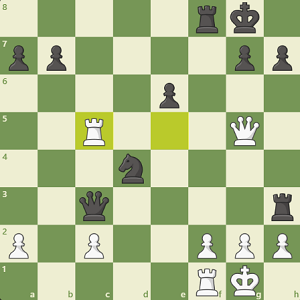
i completely suck at chess, so im going to go through my monkey brain thought process when playing it
"take their rook with your queen"
"and then what"
"then ive took their rook and they have 1 less piece, which is good"
"is it a good move?"
"yeah, i took their rook, they have less pieces on the board, my army is stronger, rook got buffed this patch etc etc etc etc etc"
you have experience in chess, so you intuitively know this is a bad move despite it immediately doing something that is usually considered good
there is such a strong pull to something that has an instantly good effect, regardless of if it leads to bad effects in future
this is 1st order thinking. you observe the immediate consequences of actions and judge those consequences deeply, rather than doing the smart thing of digging deeper into further consequences, thinking 10 moves ahead
more importantly, the 1st order consequences of decisions are not high-impact. the consequences of your consequences (of your consequences) are the ones that are really important
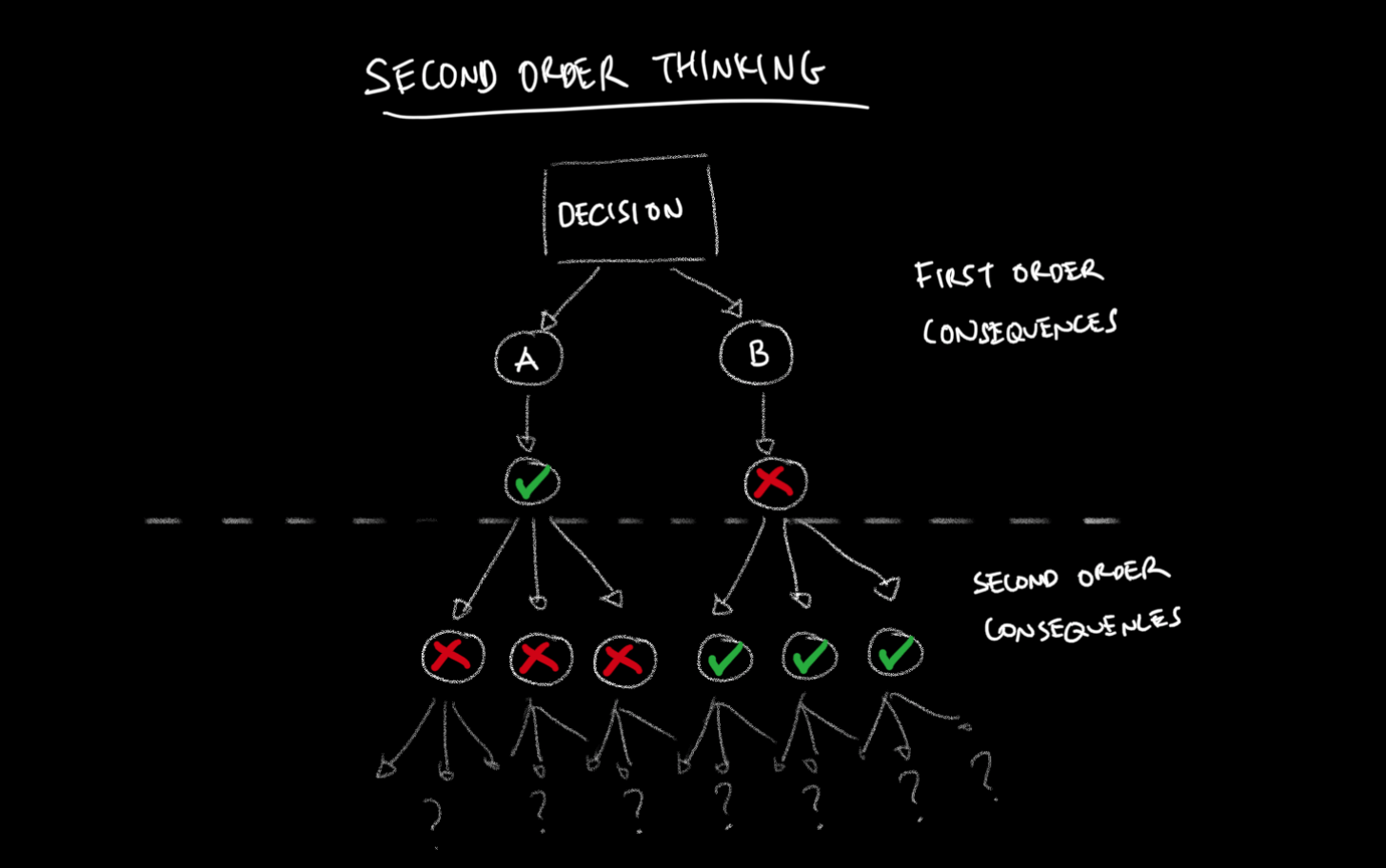 (from Second Order Thinking: Unintended Consequences - https://mannhowie.com/second-order-thinking) i inverted the colours so it doesnt explode your eyes
(from Second Order Thinking: Unintended Consequences - https://mannhowie.com/second-order-thinking) i inverted the colours so it doesnt explode your eyes
2nd order thinking is unraveling the implications of first order impacts
to know if you're making a good decision, you need to ask "and then what?" to the plausible results of your decision. if you are honest with your answers, the thing you end up with will be the final essence of your decision, and you will know if it plays into your game's core values or not
nth order would be having a good idea of what moves will lead to positions which will accomplish your goal of winning the game
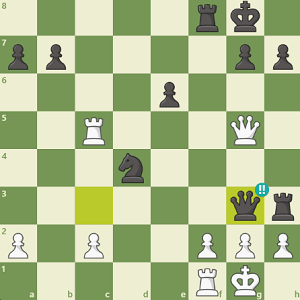
applying this to game design
new game designers fall for the same trap a lot
with good intentions, designers make a barrel of kinda-cool feeling stuff. however, their focus is on the superficial mechanics, and the effects of those mechanics can be far-fetched from their real vision
they will add something, not because it makes their game's core emotion stronger, but because they saw it in another game, or are trying to patch a hole in the design without thinking
the results of those mechanics can be so underwhelimg, unversatile, or confusing, that players will just become bored because there's no higher-level thinking to do, and this will surprise the designer who hadn't thought deeply about their dynamics
mda framework
WATCH THIS VIDEO
How To Analyse A Video Game’s Design - https://www.youtube.com/watch?v=iIOIT3dCy5w
quick-ish overview:
- mechanics — this is what you code, and are the real things that your player can do
- dynamics — the result of your mechanics, e.g. the player zips around dodging bullets
- aesthetics — how the player feels as a result of the dynamics, and ultimately are the entire point of your game, the vibe or vision you want to get across
this ties quite well into orders of thinking
1st order (mechanics) -> 2nd order (dynamics, where the game happens) -> 3rd order (aesthetics, pillars, the point of ur game)
mechanics are a liability; they take dev time to code, maintain, test, juice up, QA, etc. they are literally the "cost" of your game. for any game that us bedroom indies with full time jobs would make, you want a really really small set of mechanics which pay for themselves greatly. so many of the best indie games have 1 or 2 actual mechanics, think celeste
dynamics are your game. the greater set of dynamics your game has, the deeper it is. this is the part of your game you want to think about and test the most. even if your game just needs to be a toy and doesn't have any grand design, it needs to be interesting to interact with and make the player do some kind of thinking.
minimise the number of mechanics and maximise the number of dynamics
applying this in real life to an actual honest to god decision
just to bully my friend miredly, we had one idea during our latest jam for a mechanic;
"to lean into the makeshift theme, we could have the robot bosses drop heaps of scrap that you can take cover behind"
this idea is relatively unassuming. it makes sense, it accomplises a goal (realise the jam's theme better). but, then what?
then, the player could stand behind this cover and be safe from bullets. but then what?
the player is stationary, and will hide until they see an opening. then what?
the player won't have to worry about or learn the bullet pattens from the boss
this doesn't sound very "frenetic dashy time-trial bullet hell kill the boss as fast as possible and dodge huge stage-wide sweeping ffxiv attacks"
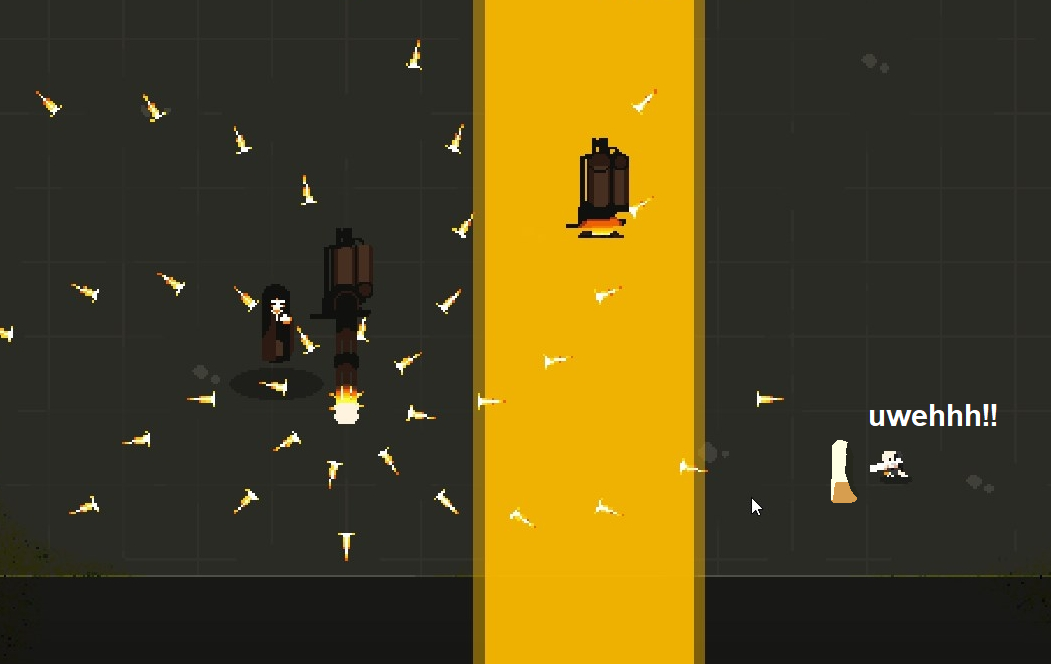
but, it's not a bad idea. it could work in other games that are really similar, but with different visions. gungeon uses it well. try the exercise again:
the player can kick over tables for cover. and then what?
then they could hide from the huge amount of bullets, and pick off enemies one by one. and then what?
and have the option to tackle the room slowly, or to take a quick breather without any reprocussions. and then what?
we can stuff the room full of more enemies to make the opposition feel stronger, and for the player to think of more enviornmental solutions other than dodging and gunning
hm..! ok yeah that sounds pretty fine, that actually adds more ways to play the game, especially since it's optional. we can balance it by making the cover temporary too, where it breaks
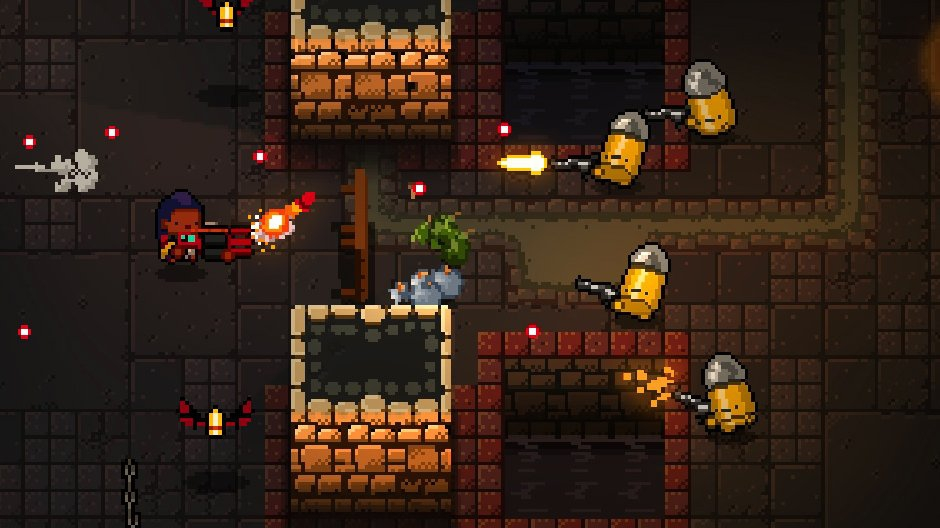
the difference is reaaaaaaaaaaaaally subtle, and im not even sure i got the difference across well enough. you could talk yourself into thinking the mechanic is a good idea, but if you think deeply enough about it and arrive at rough conclusions often that take away from your game's experience, scrap it and go to the next idea. ideas are cheap and fast to make, so don't worry about being destructive!
anywya if anyone can tell me how to make fun videogames pls help me